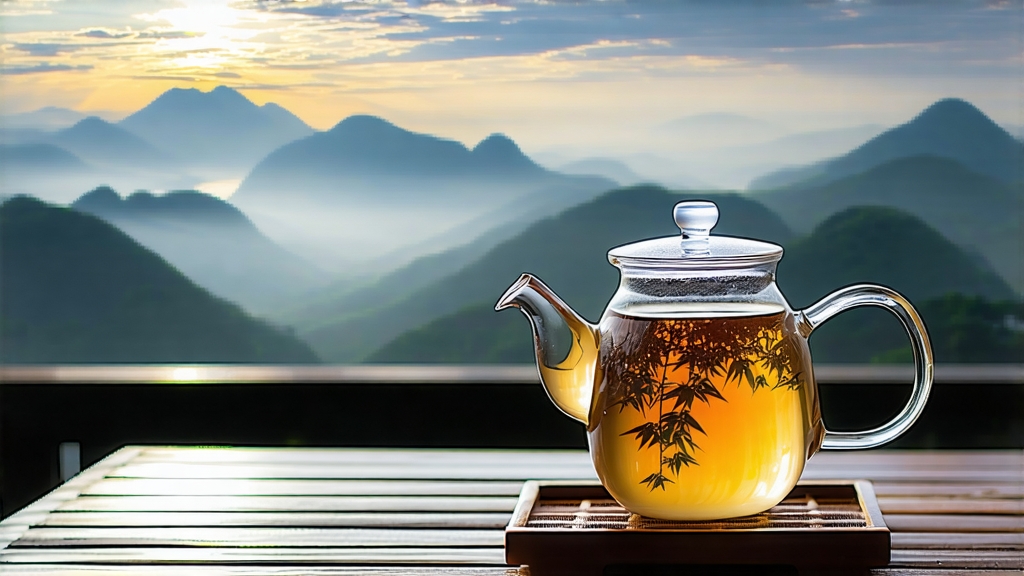
Among the six great families of Chinese tea, white tea is the least theatrical yet most elusive, valued for what it refuses to do: rolling, roasting, pummeling or otherwise shouting. Within this quiet clan, Bai Hao Yin Zhen—literally “White Hair Silver Needle”—sits at the apex, a tea made entirely of unopened buds so heavily downed they look as if they were dipped in hoarfrost. To international drinkers who equate “white” with pallid insipidity, Silver Needle is a revelation: a liquor the colour of early dawn that can smell like standing in a meadow after rain and finish with the cool sweetness of melted rock-candy. This essay invites you to follow the needle from 18th-century legend to 21st-century glass, learning why the most delicate gesture in Chinese tea craft is simply to leave the leaf alone.
-
Historical whispers
The first verifiable record of “white tea” appears in the Song Dynasty (960-1279) when Huizong Emperor praised “white buds of tribute” so rare that they were whisked like matcha. Yet those cakes were green tea in disguise; the true bud-only Yin Zhen emerged much later in coastal Fujian, probably during the Qianlong period (1736-95). Fuding and Zhenghe counties, blessed by a subtropical maritime monsoon, discovered that their Da Bai (Big White) cultivar produced unusually plump buds whose silvery trichomes resisted normal oxidation. By the late Qing, Silver Needle was travelling down the Min River to Fuzhou port, then by clipper to Southeast Asia and Europe, where Victorian apothecaries sold it as “Pekoe Silver Tips” at prices rivalling first-flush Darjeeling. After 1949 the tea became diplomatic currency: Chairman Mao reportedly presented 500 g to Ho Chi Minh in 1971, and in 2008 Fuding Silver Needle was poured for heads of state at the Great Hall of the People, sealing its reputation as China’s gentlest face to the world. -
Terroir and cultivar
Authentic Silver Needle is restricted to three Fujian townships—Fuding, Zhenghe and Jianyang—each arguing its superiority. Fuding’s coastal terraces, laced with red lateritic soil and cooled by sea fog, yield buds that are plumper, higher in amino acids and famously “milk-sweet.” Zhenghe, inland and 200 m higher, gives thinner, more needle-like buds with a pronounced floral lift reminiscent of lily and orchid. Jianyang, the smallest appellation, bridges the two, offering peppery hints. The raw material must be Da Bai Hao, the “Big White Pekoe” cultivar, whose single bud can weigh 0.5–1 g, three times that of conventional tea. Harvest is brutally brief: only the clear days between mid-March and early April, when the bud is exactly 2.5–3 cm, still sheathed in one juvenile leaf that has not unfurled. Pickers work against a spring sun that can oxidise a bud in minutes; baskets are shaded with wet muslin and rushed to the withering shed within the hour. -
The craft of “doing nothing”
Silver Needle’s processing is minimalist but unforgiving. The traditional route is outdoor withering on bamboo racks called liang qing. Buds are laid 1 cm thick, turned every half-hour for 36–48 hours while tea masters read the sky: too sunny and the enzyme dies, too cloudy and the grassiness lingers. Night dew is essential; it rehydrates the trichomes, encouraging a slow internal oxidation that hovers around 5–8 %, enough to round the edges yet remain legally “white tea.” When the bud feels velvet-dry yet retains 10 % moisture, it is moved indoors for a final 6-hour “soft fire” at 28 °C, using charcoal embers buried in ash so no smoke taints the down. Modern factories mimic the climate in heated troughs, but connoisseurs swear by the moonlit version: buds that have breathed the same night air as jasmine and loquat carry an ineffusable clarity. After drying, the tea rests for a minimum of 20 days so residual moisture migrates outward; many producers age it for years, arguing that Silver Needle, like sheng pu-erh, evolves from fresh hay